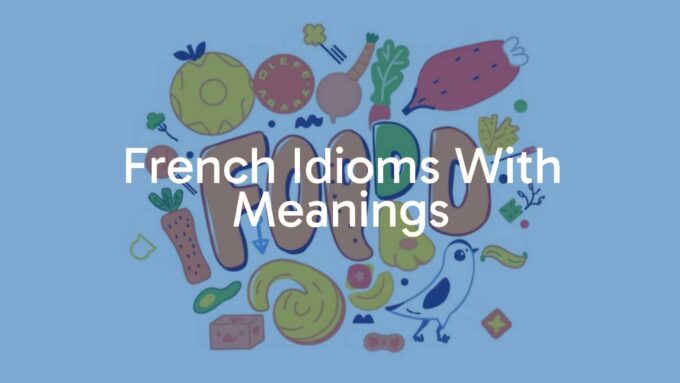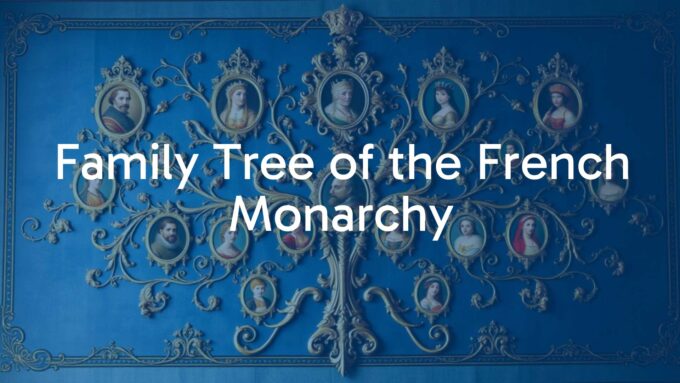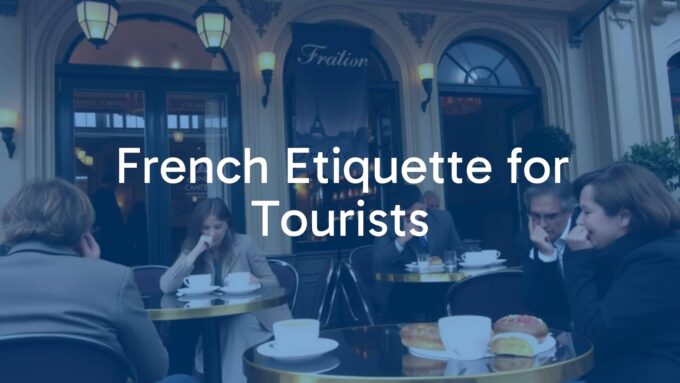French holiday traditions come from centuries of history, faith, and local culture. They are not copies of other countries’ customs. They have their own style, with quiet charm, shared meals, and time with family and friends. Some are religious and serious; others are joyful and public. Together, they show how people in France like to celebrate.
To learn about these traditions is to see how France itself grew over time. Wars, regions, and a love of good food and company all shaped the holiday calendar. France may be modern, but it still keeps its old customs, which makes each holiday feel special.
What Are French Holiday Traditions?
French holiday traditions include many customs and events throughout the year. They are more than days off. They reflect values, history, religion, and the idea of sharing good moments with others. From the quiet mood of All Saints’ Day to the lively crowds on Bastille Day, each holiday has its own meaning and habits.
Many traditions center on long meals, family time, and town gatherings. People often choose quality time and well-cooked food over big, flashy displays. This simple, refined style is common in France’s celebrations.
How Do French Holiday Traditions Differ From Other Countries?
French holidays share roots with other Western countries, especially Christian ones, but some parts feel different. Many celebrations are calmer and less focused on shopping. For example, French cities do have Christmas lights, but you usually won’t see houses covered in outdoor lights like in the United States. The focus is often on close family time and seasonal dishes.
Greeting customs also differ. People save “Joyeux Noël” for Christmas Eve and Christmas Day. Saying “Bonne Année” before midnight on December 31 is seen as bad luck. This careful timing shows respect for each moment in the season.
Why Are French Holiday Traditions Important to French Culture?
These traditions matter because they connect generations and support a shared identity. They are living habits, not museum pieces. They shape how people gather, how families stay close, and how the country remembers its past. Many holidays mark key events, such as the end of wars or the birth of the Republic, which builds pride and awareness of history.
They also give a rhythm to community life. Families and friends meet, eat, and make memories. The focus on food shows how important cooking and eating together are in France. By taking part in these rituals, people keep their culture alive for the next generation.
Which Public Holidays Are Celebrated in France?
France has ten official national holidays, plus many local and regional days. If a holiday falls on a Thursday or Tuesday, many people “faire le pont” (“make the bridge”) by taking the Friday or Monday off too. If a holiday falls on a Sunday, the Monday is often a day off. Time to rest and be with loved ones is a strong part of French life.
These holidays mix religious dates with major moments from history. Together, they paint a clear picture of French culture.
| Date | English Name | French Name | Notes |
|---|---|---|---|
| January 1 | New Year’s Day | Nouvel An | Fireworks, parties, family time |
| Movable (Monday) | Easter Monday | Lundi de Pâques | Day off after Easter Sunday |
| May 1 | Labor Day | Fête du Travail | Parades, lily-of-the-valley |
| May 8 | Victory in Europe Day | Fête de la Victoire | WWII remembrance |
| July 14 | Bastille Day | Fête Nationale | Parade, fireworks |
| August 15 | Assumption Day | L’Assomption | Religious services, summer break |
| November 1 | All Saints’ Day | Toussaint | Cemetery visits, flowers |
| November 11 | Armistice Day | Jour du Souvenir | WWI remembrance |
| December 25 | Christmas | Noël | Family, church, feast |
New Year’s Day – Nouvel An
New Year’s Day is a major holiday in France, filled with hope for the year to come. Fireworks light up the sky, and people count down to midnight at parties around the country. In Paris, crowds gather near the Eiffel Tower to watch the show.
Many people spend the night with family or friends. Champagne is common, and some enjoy lentils or other dishes believed to bring luck. Some make resolutions, while others simply use the time to be with the people they care about.
Epiphany – Épiphanie and the Galette des Rois
Epiphany on January 6 marks the visit of the Three Wise Men. It is widely celebrated in France even though it is not an official public holiday. The star of the day is the galette des Rois (Kings’ Cake).
This cake is puff pastry with almond filling. A tiny charm, the fève, is baked inside. Whoever finds it wears a paper crown and becomes king or queen for the day, often choosing a partner. The game adds fun to the quiet days after Christmas.

Easter – Pâques and Related Festivities
Easter is one of the most important Christian holidays in France. Lent lasts 40 days and includes Ash Wednesday, Palm Sunday, and Good Friday.
On Easter Sunday many go to church, then share a big meal with family. Easter Monday is a day off too. A favorite story says church bells fly to Rome to be blessed and return with chocolates and eggs for children to find.
Labor Day – Fête du Travail
Labor Day on May 1 honors workers. It is a day off for most people. Parades and marches are common, often led by unions and groups speaking about workers’ rights.
People may wear badges or certain colors to show unity. Others spend the day with picnics, dances, or visits with friends. In many places, people give each other sprigs of lily-of-the-valley for good luck.
Victory in Europe Day – Fête de la Victoire
May 8 marks the end of World War II in Europe. It is a time to honor those who fought and those who died, including victims of the Holocaust. The day is meaningful for many families.
There are ceremonies and parades across France. In Paris, the parade on the Champs-Élysées is the largest, with military units and music. People also lay flowers at memorials and attend concerts and fireworks to remember and give thanks.
Bastille Day – Fête Nationale
On July 14, France celebrates the storming of the Bastille in 1789, a key event of the French Revolution. It stands for unity and the push for liberty and democracy.
There are large military parades, especially in Paris, with units marching down the Champs-Élysées. Towns and cities host concerts, fireworks over famous sites like the Eiffel Tower, and street dances. People come together to honor the values of liberty, equality, and fraternity.

Assumption Day – L’Assomption
On August 15, Catholics in France honor Mary, the mother of Jesus. Many attend mass and local services. It is a national holiday, and many offices close.
Since it falls in mid-summer, many people take a long weekend to go to the beach, the countryside, or to see family. It is a popular time for summer trips and rest.
All Saints’ Day – Toussaint
All Saints’ Day on November 1 is both religious and cultural. It honors all saints, known and unknown, and carries a strong theme of remembrance.
Families visit cemeteries and place chrysanthemums on graves. Florists are busy in the days before the holiday. Some places hold Halloween events on October 31, but November 1 keeps its respectful tone.
Armistice Day – Jour du Souvenir
On November 11, France remembers the end of World War I in 1918. People reflect on the costs of war and the hope for peace.
Families gather to remember those who died. Towns hold ceremonies with wreaths, troops, and quiet moments. The day calls people to remember hard lessons from the past.
Christmas – Noël
Christmas in France is loved for its warm, simple style. Some customs match those in other places, but food, family, and a soft, elegant touch stand out. Christmas Eve, called Le Réveillon de Noël, is often the key moment. Many still attend midnight mass with hymns and nativity scenes, even if fewer people go than in the past.
After church, or earlier in the evening, families share a long, festive dinner with several courses. December 25 is also a day off, with more family time, gifts, and good food. People decorate trees (sapin de Noël), exchange presents, and enjoy favorites like roast turkey and the famous bûche de Noël. The season runs into January with Epiphany.
What Are the Most Unique French Christmas Traditions?
French Christmas has its own flavor, even if it shares some ideas with other countries. The special dishes on Christmas Eve, the way people exchange gifts, and the careful attention to small details make the season feel very French.
These habits create a holiday that favors quiet moments and fine touches over big, commercial displays.
Advent Calendars – Les Calendriers de l’Avent
The Advent calendar is popular with children and more and more with adults. It began in Germany but is now common in France. Starting December 1, children open one window each day for a small treat.
Today, adults enjoy calendars too, filled with perfume samples, teas, beauty items, or local goods. Whether simple or fancy, they help people count down to Christmas with a small daily surprise.
Christmas Markets – Marchés de Noël
Christmas markets fill many French towns from late November or early December. Wooden stalls, lights, and the smell of winter foods set the scene.
People stroll through, looking at handmade gifts, ornaments, and regional foods. Vendors sell mulled wine (vin chaud), gingerbread, roasted chestnuts, cheeses, and more. Paris hosts several markets, like the one at the Tuileries, but Strasbourg in Alsace has the oldest and most famous in the country. These markets are social places as much as shopping spots.

The French Christmas Tree – Sapin de Noël
The Christmas tree used to go up only on December 24 and stay until Epiphany. That was the older Catholic custom. Today, many families set up their tree in early December.
Trees are decorated with lights, ornaments, and tinsel. Some people add handmade items or natural touches. The idea came from Germany, where fir trees were brought inside during winter to stand for life and light. Now the tree, real or artificial, is the center of many French homes at Christmas.
Nativity Scenes – Crèches de Noël
Nativity scenes are very important in France, especially in Provence. You will see them in homes, churches, and public places.
Provençal scenes include santons (“little saints”), small hand-painted clay figures. Besides Mary, Joseph, and baby Jesus, they show villagers like bakers, farmers, and fishermen. Many families add new figures each year, and Advent fairs in Provence sell them. Baby Jesus is placed in the scene at midnight on Christmas Eve, and the display stays up until Candlemas (La Chandeleur) on February 2.

Shoes by the Fireplace
Children place their shoes or slippers by the fireplace, hoping that Père Noël will fill them with gifts. The Tino Rossi song “Petit Papa Noël” tells this story.
Stockings are less common in France, though some families do use them. Today many gifts end up under or next to the tree, but the idea of filling shoes by the hearth remains a beloved image.
French Santa Claus – Le Père Noël
In France, Santa is Le Père Noël. He wears red and brings gifts to children, often on Christmas Eve, with presents opened that night or the next morning.
In some places, stories mention Le Père Fouettard, who once served as a warning for misbehavior and might leave coal. This old tale is less common now, but it is part of the older folklore in some regions.
Les Papillotes – Festive Chocolates
Les Papillotes are chocolates (and sometimes candied fruit) wrapped in shiny paper with a small note or riddle inside. They add fun to the table after dinner.
According to legend, they began in Lyon in 1790 with a pastry chef named Sieur Papillot. His apprentice wrapped chocolates with love notes for the chef’s daughter. The chef liked the idea and turned it into a treat for all. Today, papillotes are a holiday staple, especially at the Christmas Eve dinner.
La Bûche de Noël – Yule Log Cake
The Bûche de Noël is a classic French Christmas dessert. It is a rolled sponge cake, carefully decorated to look like a small Yule log, often with icing that looks like bark and small holiday decorations.
Traditional flavors include chocolate and chestnut with buttercream. Modern pastry shops make many versions, from fruit mousses to ice cream logs. Some sell mini logs so everyone can try different flavors. The cake recalls the old custom of burning a real log to bring warmth and luck for the new year.
Midnight Mass – Messe de Minuit
Midnight Mass is still important for many, even if fewer people attend than before. Churches across France hold late-night services with hymns and readings about the Nativity, and sometimes short plays.
In Provence, a special candle is lit. For many, the service is both a spiritual moment and a community event. After church, families often go home to start the big Christmas Eve meal, Le Réveillon de Noël.
The Christmas Eve Feast – Le Réveillon de Noël
Le Réveillon is the highlight of the season for many families. It is a long, festive dinner on December 24, sometimes after Midnight Mass. People take their time, talk, and enjoy good food and wine.
Menus vary by region, but common starters include oysters, foie gras, and smoked salmon. Main dishes might be capon or turkey with chestnuts, goose, or game like venison. Coastal areas often serve seafood platters with lobster, shrimp, and scallops. Fine wines and champagne are served, and the meal usually ends with the Bûche de Noël. The table is often set with care to make the night feel special.
French Christmas Carols – Les Chants de Noël
France has many beautiful Christmas songs, but street caroling is not very common. There is no special French word for roving carolers beyond “chanter des chants de Noël.”
You may hear carols at church, at home, or in markets, but groups going door to door are rare. French pop stars do not often release full Christmas albums. The music is part of the season; public singing just plays a smaller role.
What Happens After Christmas in France?
The festive mood does not stop on December 25. It continues into the New Year with more customs that bring people together, add a bit of luck, and keep the good food coming.
The Festival of the Kings – La Fête des Rois
After Christmas, people mark La Fête des Rois on January 6, which is Epiphany. Families share the Galette des Rois, a puff pastry with frangipane and a hidden fève.
Whoever finds the fève becomes king or queen for the day and wears a paper crown, often choosing a “royal” partner. Many people collect the little charms from year to year, making the tradition even more fun.
Les Étrennes – New Year’s Gifts
Les Étrennes are cash or small gifts given around Christmas or New Year to people who help throughout the year: mail carriers, garbage collectors, delivery drivers, and cleaners. It is a strong custom, meant to say thank you.
These gifts were once given only after New Year’s Day, but now people give them from November through January. Some service teams sell calendars door to door; others accept a cash tip. For household staff like a cleaner or gardener, people often give a more generous amount, such as half to a full month’s wage.
Are There French Holiday Traditions for Other Seasons?
Holiday customs in France are not limited to winter. The year is full of events that show local color and long-standing habits. From carnival fun to foods that mark certain days, each season brings something different.
Mardi Gras and Carnival Celebrations
Mardi Gras, or Fat Tuesday, is the day before Ash Wednesday and the start of Lent. People enjoy rich foods and parties before the quieter Lenten period.
While the idea spread widely, including to New Orleans, French cities celebrate in different ways. Some keep it low-key; others, like Nice, host major parades with costumes, floats, and music. Pancakes are a simple food linked to the day.
April Fools’ Day – Poisson d’Avril
April 1 is Poisson d’Avril (“April Fish”). Like elsewhere, people play jokes, but the fish adds a French twist.
The classic prank is to tape a paper fish on someone’s back without them knowing. When they find it, the prankster shouts “Poisson d’Avril!” It is a light, playful tradition enjoyed by kids and adults.
La Chandeleur – Candlemas and Crêpes
La Chandeleur falls on February 2, forty days after Christmas. It has both religious and older seasonal roots and marks the time to take down nativity scenes in many places.
The main custom is making and eating crêpes. Their golden, round shape stands for the sun and the return of longer days. A common game is to hold a coin in one hand while flipping the crêpe with the other. If you flip it well, the year should bring good fortune. Some people also light candles or take part in small torch walks.

French Valentine’s Day Customs
February 14 is la Saint-Valentin, also called la Fête des Amoureux. Couples share gifts like flowers or chocolates and enjoy a romantic dinner at home or in a restaurant.
The style tends to be intimate and heartfelt, with simple gestures and shared time rather than over-the-top displays.
Do French Holiday Traditions Vary by Region?
Yes, many customs change from place to place. National holidays are the same everywhere, but local foods, history, and habits make each region’s celebrations feel different. This variety shows how strong and diverse local culture is across France.
Alsace: Christmas Markets and Gingerbread
Alsace in the northeast has deep Christmas roots influenced by German culture. Strasbourg’s Christkindelsmärik is one of Europe’s oldest, and the region is famous for charming markets with wooden stalls and festive lights.
Gingerbread (pain d’épice) is a favorite treat, often decorated and sold with other local foods and crafts. Many believe the Christmas tree tradition began in Alsace in the 1500s, where evergreens were decorated with apples, sweets, and candles.
Provence: 13 Desserts of Noël
Provence has a well-known Christmas custom called the “13 Desserts of Noël” (Les Treize Desserts de Noël), served at Le Gros Souper on Christmas Eve and around that time.
The thirteen items stand for Jesus and the twelve apostles. The table often includes nuts, fresh fruit (grapes, melons, oranges), dried fruit (figs, dates, raisins), white and dark nougat, and local biscuits or sweet breads. Families share the spread with visitors in the days that follow.
Brittany: Pardons and Religious Festivals
Brittany’s culture has strong Celtic and religious roots. Christmas is marked, but many of the region’s most famous events are “Pardons,” held from spring to autumn.
These are pilgrimages and festivals to honor a saint and ask forgiveness. They include mass, processions to chapels, traditional dress, music, and dancing. They show how faith and community life go hand in hand in Brittany.
How Have French Holiday Traditions Changed Over Time?
Traditions change as society, technology, and global trends change. Many core customs remain, but the way people observe them has shifted, balancing old habits with new ways of living.
Are Christmas Greeting Cards Still Common in France?
Sending paper Christmas cards is less common now. People still send holiday wishes, but more often by email or social media. This mirrors a wider move away from postal mail.
End-of-year updates often appear on platforms like Facebook, with family photos and messages for the year ahead. The feeling stays the same; the method has changed.
Traditional vs. Modern Celebrations
French holidays mix old and new. The big Christmas Eve meal, the Bûche de Noël, and the Galette des Rois are still central. But trees now go up earlier in December than they used to. Père Noël looks more like the global Santa, though older tales like Père Fouettard still exist in some places.
Shops bring out Christmas treats soon after Halloween. Many people send digital greetings instead of cards. Even with these changes, the focus on family, great food, and a simple, graceful style still defines French holidays.
Frequently Asked Questions About French Holiday Traditions
When Do the French Set Up Their Christmas Tree?
Tradition says the sapin de Noël should go up on December 24 and stay until January 6. That follows old Catholic practice.
In daily life, there is no single rule. Many families decorate in early December to enjoy the season longer. Some with artificial trees set them up even earlier. Each household follows its own habit.
What Are Typical French Holiday Greetings?
People in France often wait until close to the holiday to give greetings.
- For Christmas: “Joyeux Noël!” You will hear this most around Christmas Eve and Christmas Day, not weeks in advance.
- For New Year: “Bonne Année!” People start saying it after midnight on December 31 and during the days that follow.
- For the season: “Joyeuses fêtes!” is a polite, general greeting for the time between Christmas and New Year.
French greetings tend to be timed close to the day itself.
Who Receives Holiday Gifts in France?
Children are the main gift receivers, and Père Noël brings their presents. Some families open gifts on Christmas Eve, others on Christmas morning. Kids used to leave shoes by the fireplace; now many gifts sit under the tree.
Adults exchange gifts with close family and friends. A distinct custom is Les Étrennes for service workers, often cash or a small gift given around Christmas or New Year as a thank-you for their work.
Final Thoughts on French Holiday Traditions and Their Significance
The appeal of French holiday traditions comes from their mix of deep history, local variety, and attention to the good things in life. These events are more than yearly dates. They show a culture that values connection, great cooking, and a calm, steady way of celebrating. Big shopping moments are less common; meaningful time and well-prepared meals matter more.
From busy Christmas markets to the long family dinner of Le Réveillon, each custom strengthens social bonds. Regional foods like Provence’s 13 desserts or Alsace’s gingerbread highlight local pride inside a national story. These traditions keep heritage alive, bring generations together, and remind everyone-locals and visitors-how much joy there is in celebrating with care, flavor, and warm company.













Leave a comment